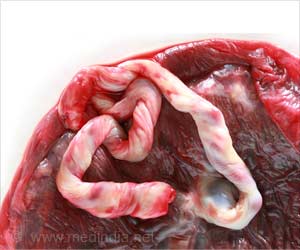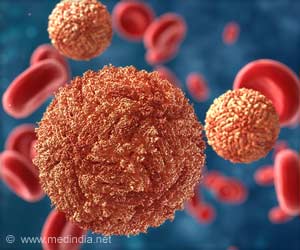Akash Saxena, 55, was diagnosed with liver cancer.

Chemoembolization is a minimally invasive treatment for liver cancer. Under this therapy, the maximum dose of chemotherapy is given to tumor cells and the toxic effect of chemotherapy is minimal. Thousands of patients in India who are diagnosed with life-threatening diseases like spinal tumor; liver, lung or prostate cancer, stroke and uterine fibroids often require painful invasive surgeries and chemotherapy as part of their treatment.
Now, interventional treatments - which are also proving to be cost-effective and less painful - offer a new lease of life to hundreds of such patients.
In a country like India, where people are diagnosed with serious diseases every three minutes, while one dies of the disease every 13 minute, these practices are gaining popularity, mostly in big cities. The practice is very common in western countries, doctors said.
Interventional Radiology is a sub-speciality of radiology and utilizes minimally-invasive therapy to diagnose and treat diseases in almost all organs, usually as an alternative to traditional open surgery.
"The practice is a rapidly growing area of medicine for treating a wide variety of disorders and diseases and is playing a role in developing new techniques that may improve cancer treatment, including the use of magnetic particles to draw cancer-killing agents into tumours; and the delivery of genetic material, called gene therapy, to fight or prevent cancers," Pradeep Muley, senior consultant and Interventional Radiologist at Fortis Hospital, told IANS.
Advertisement
Muley said that these are generally easier for the patient because it involves no incisions, carries less risk, causes minimum pain, is very cost effective and usually has shorter recovery times.
Advertisement
"I must say people in India are still not aware of the treatment," he said.
Interventional radiology first evolved in the 1960s when angioplasty procedures were developed to treat blockages in arteries as an alternative to open surgical bypass.
Since then, the ability of interventional radiology techniques to treat an ever-expanding list of conditions continues to grow.
Similar to Interventional Radiology, Interventional Neuroradiology (neurology), used in diagnosing and treating serious diseases related to the head, neck and spine is also becoming a popular practise in the country, doctors said.
"The practice is very significant in treating various conditions. Interventional neuroradiology plays a critical role in dealing with cerebrovascular diseases and strokes and treating them using minimally-invasive procedures," Vipul Gupta, head of Neurovascular Interventional Center at Institute of Neurosciences in Medanta the Medicity, told IANS.
"It also avoids long term damage that may occur during open surgeries and is highly cost-effective too," he said.
Every year, over 1,000 patients - the highest in north India - undergo treatment through this procedure at the institute. The trend is also gaining recognition in other major cities across India, the doctor said.
Gupta said though the practice is gaining recognition both among the patients and medical community in the country, it is still at the initial stages.
He said about 80 percent of patients across Europe, and about 70 percent of patients in the US prefer this treatment over open surgeries, while in India, the majority of patients still undergo open surgeries.
But it is slowly gaining popularity.
"The issue is that there are very few properly trained professionals in the country. Also, the awareness among the patients is low and there is lack of an appropriate setup and equipment. But I am sure it will soon become very popular in India too. After all, it is cost-effective and less painful," Gupta asserted.
Source-IANS










